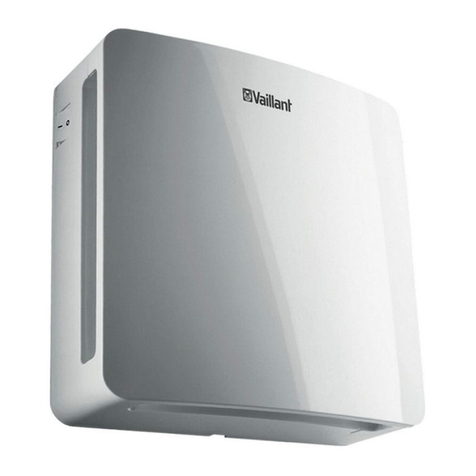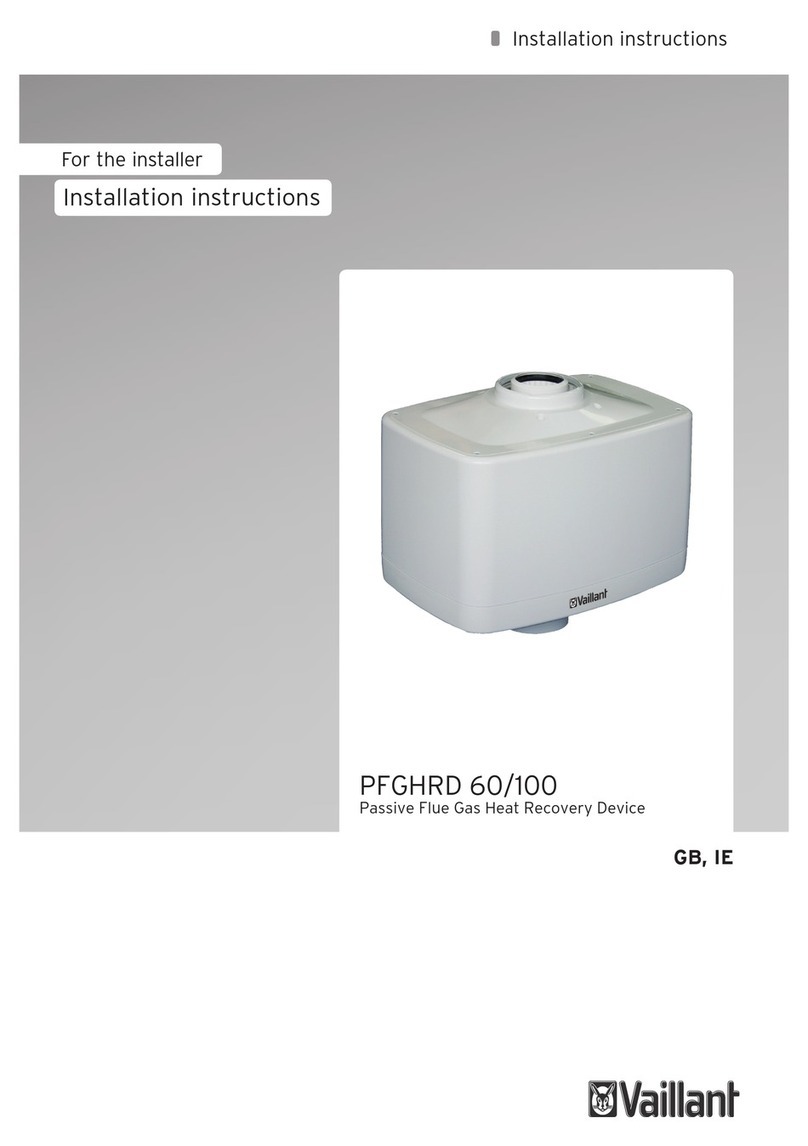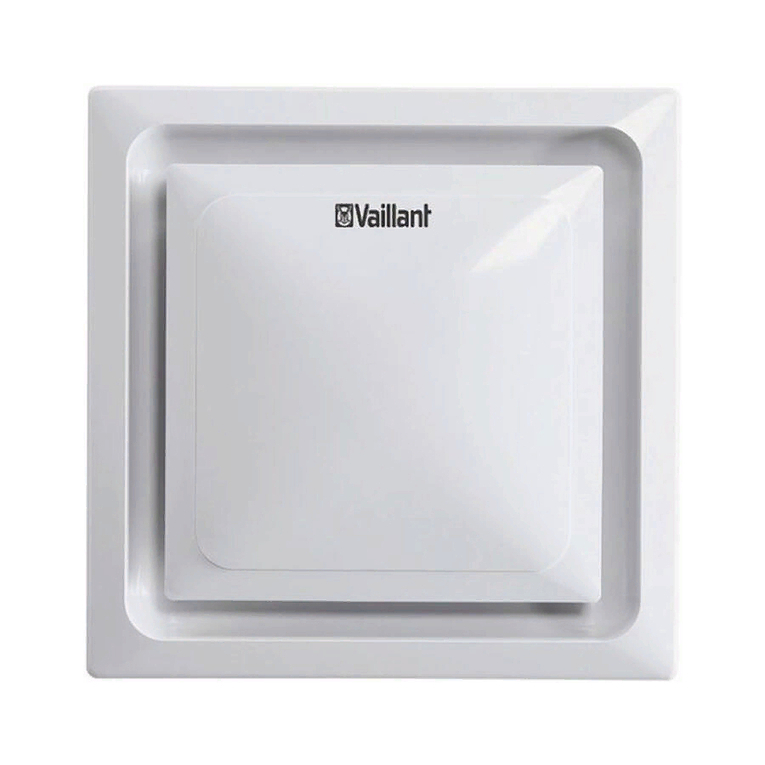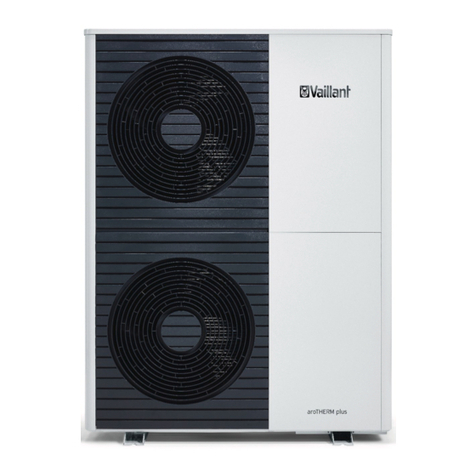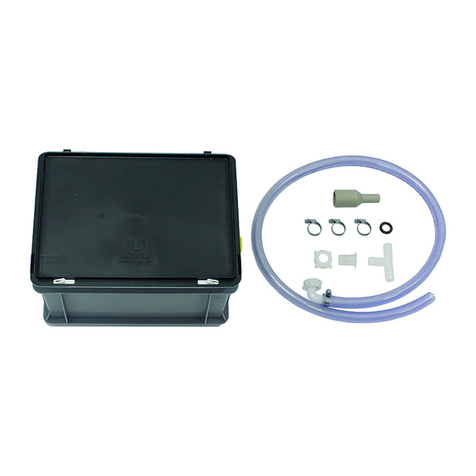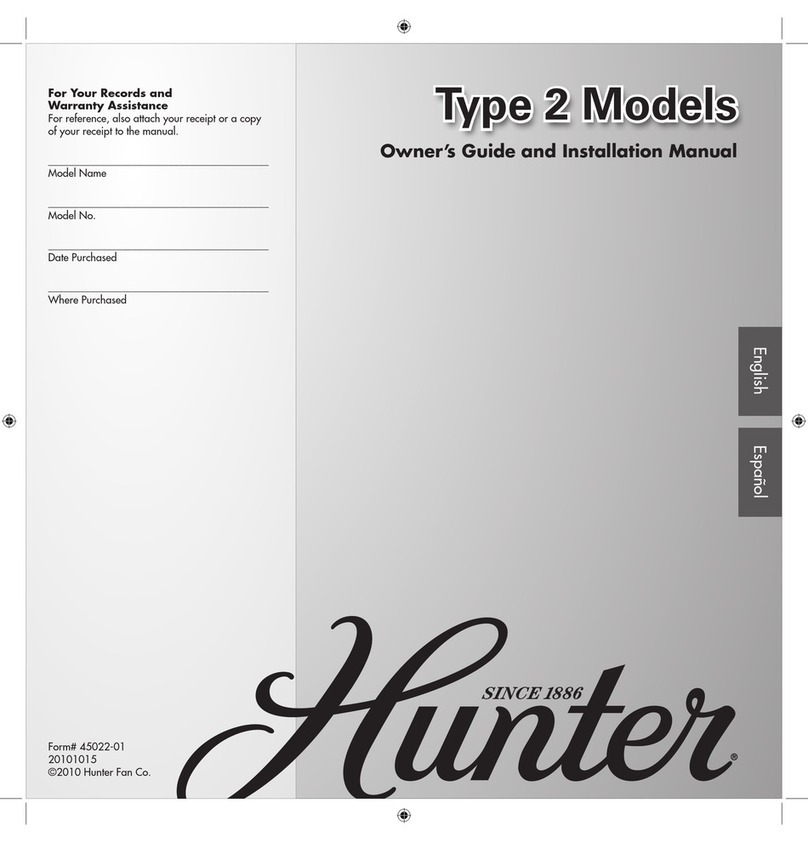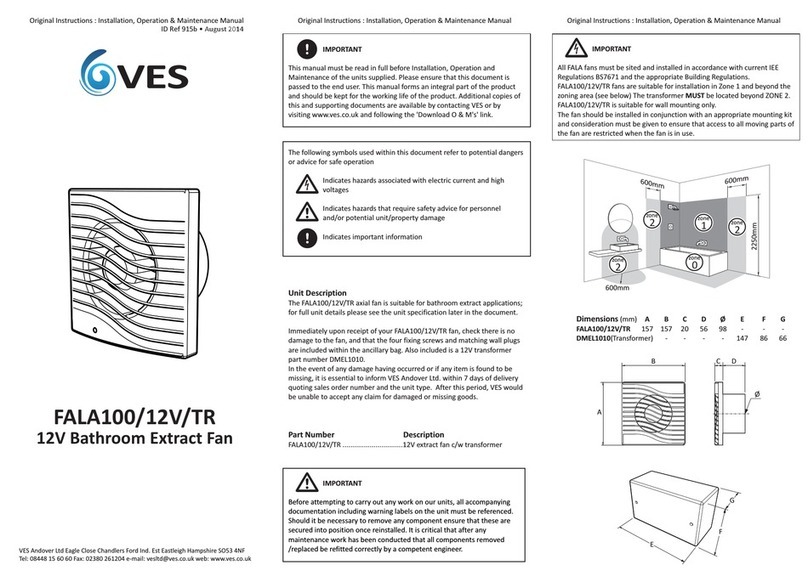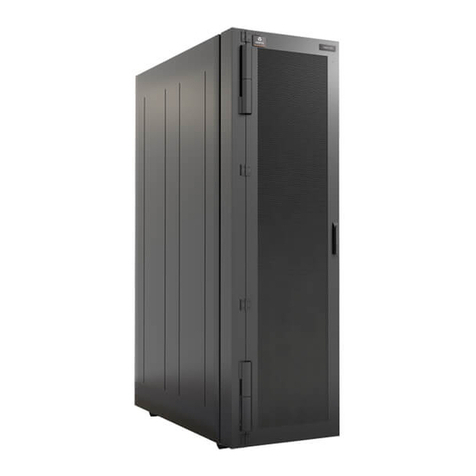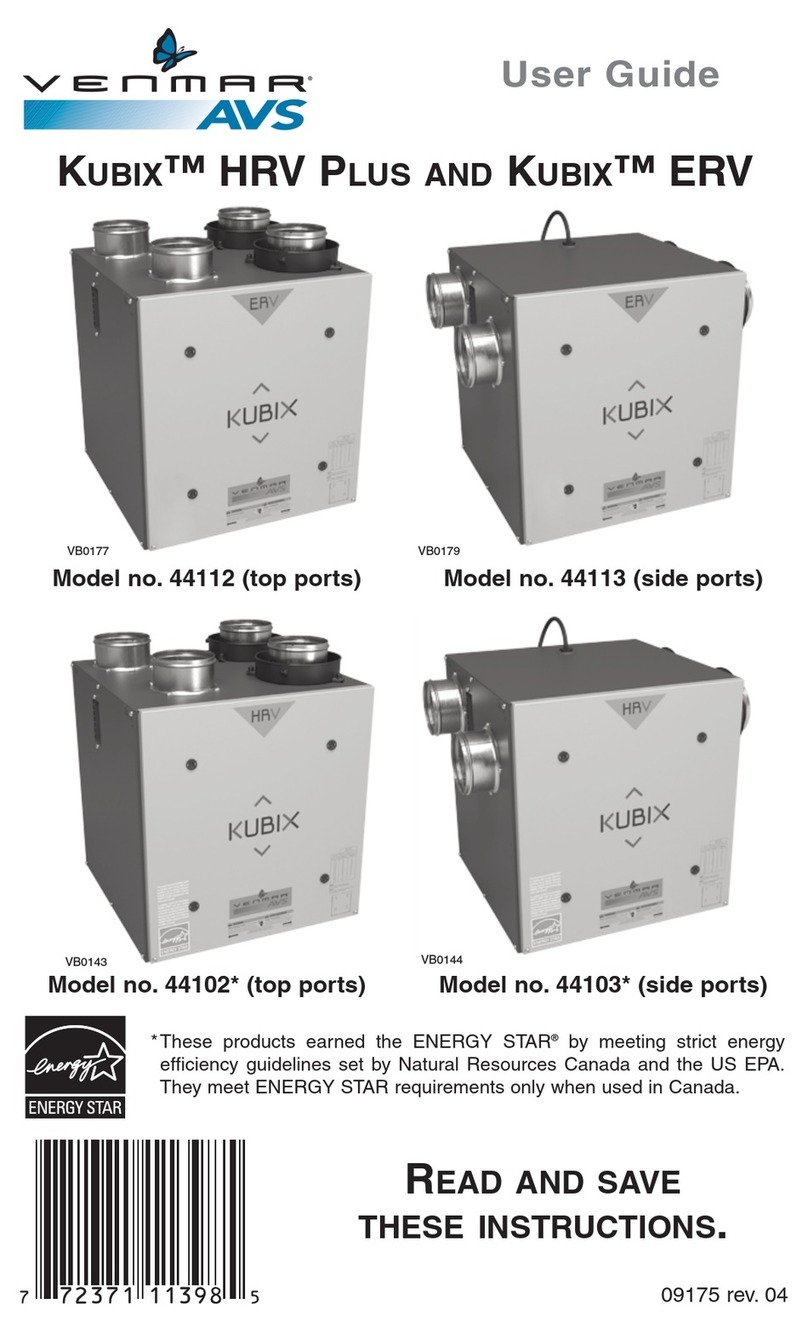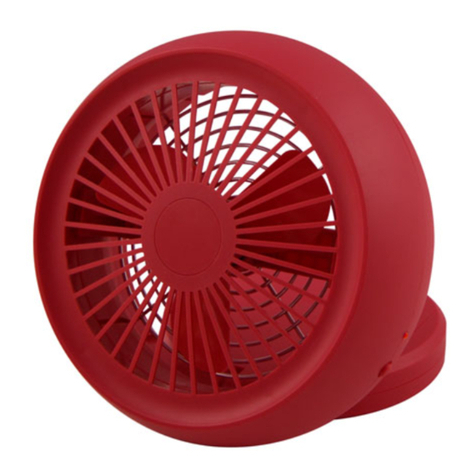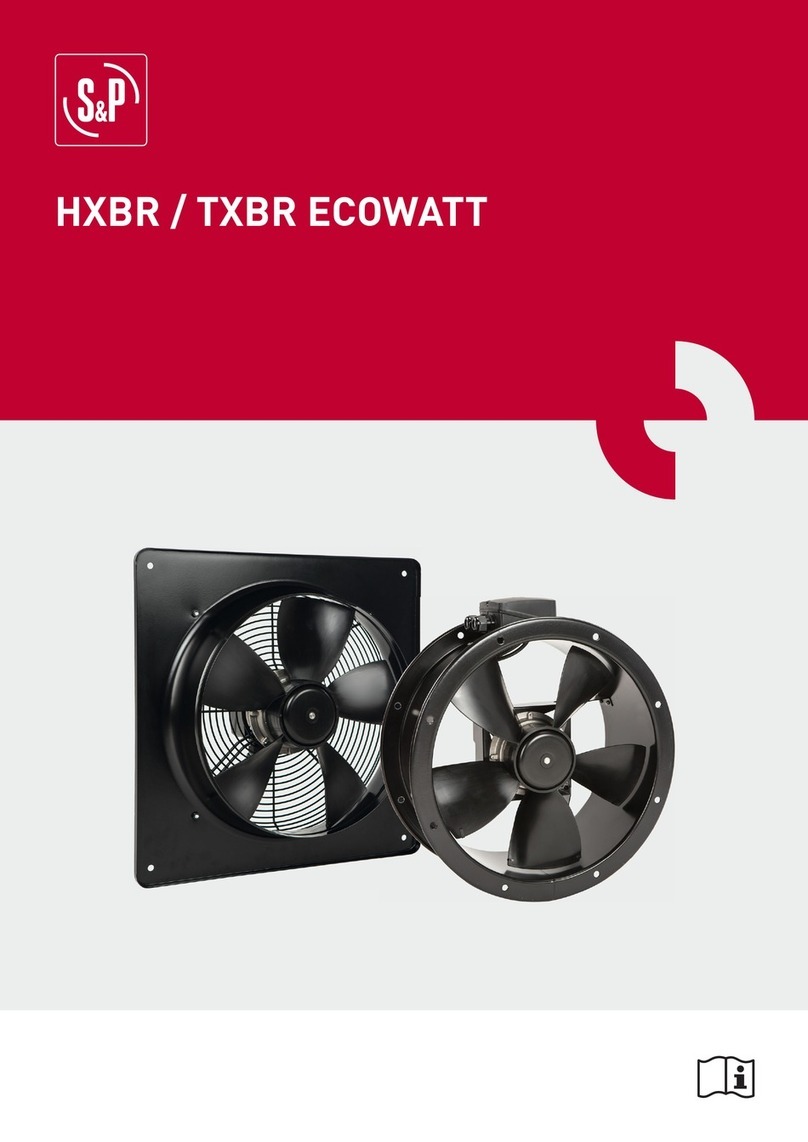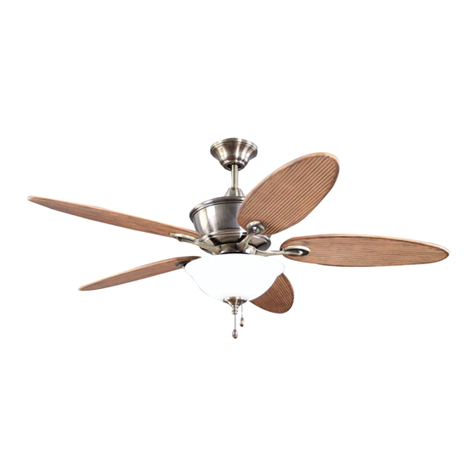
Safety 1
0020188110_03 recoVAIR Installation and maintenance instructions 3
1 Safety
1.1 Action-related warnings
Classification of action-related warnings
The action-related warnings are classified in
accordance with the severity of the possible
danger using the following warning signs and
signal words:
Warning symbols and signal words
Danger!
Imminent danger to life or risk of
severe personal injury
Danger!
Risk of death from electric shock
Warning.
Risk of minor personal injury
Caution.
Risk of material or environmental
damage
1.2 Intended use
There is a risk of injury or death to the user or
others, or of damage to the product and other
property in the event of improper use or use
for which it is not intended.
The product is only intended for aerating and
ventilating living areas. If the product is oper-
ated with a heat production source, the heat
production source must be room-sealed. The
remote control must only be used to control
the product. The product must only be oper-
ated when the filters are inserted.
The product is not suitable for aerating and
ventilating swimming pool systems. Due to
the high level of exposure to dust, the product
must not be operated during the construction
phase.
Intended use includes the following:
–observance of accompanying operating,
installation and servicing instructions for
the product and any other system compon-
ents
–compliance with all inspection and main-
tenance conditions listed in the instruc-
tions.
Any other use that is not specified in these
instructions, or use beyond that specified in
this document shall be considered improper
use. Any direct commercial or industrial use
is also deemed to be improper.
Caution.
Improper use of any kind is prohibited.
1.3 General safety information
1.3.1 Risk caused by inadequate
qualifications
The following work must only be carried out
by competent persons who are sufficiently
qualified to do so:
–Assembly
–Disassembly
–Installation
–Start-up
–Maintenance (Excluding the work that is
listed in the operating instructions.)
–Repair
–Decommissioning
▶Observe all instructions that are included
with the product.
▶Proceed in accordance with the current
state of technology.
▶Observe all applicable directives, stand-
ards, laws and other regulations.
1.3.2 Risk of poisoning caused by
simultaneous operation with a heat
production source
If the product is operated at the same time as
a heat production source, life-threatening flue
gas may escape into the rooms from the heat
production source.
▶Install a suitable safety device on-site
which monitors the pressure difference
between the living room and the flue
system and switches the product off if the
pressure difference is too large.
▶Have the installed safety device approved
by a chimney sweep.
▶Observe the instructions for the heat pro-
duction source and the heat production
source ordinance as well as any other rel-
evant laws and standards.
1.3.3 Risk of injury due to the heavy
weight of the product
▶Make sure that the product is transported
by at least two people.
